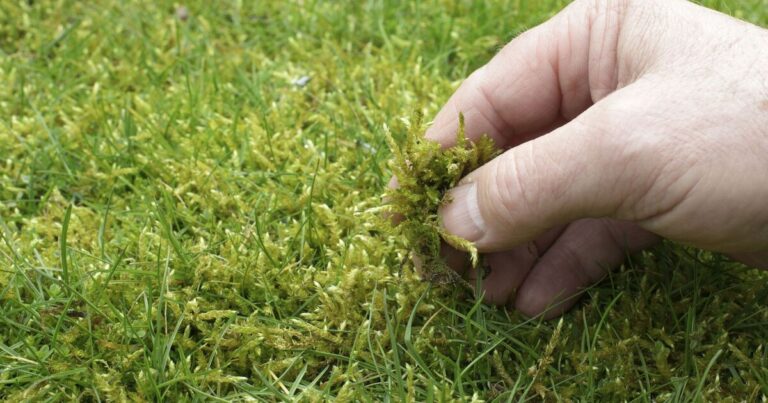Moss is a common problem in lawns, but gardeners may also find it growing on their patios in dark, damp environments.
Moss can grow in almost any type of soil and, if left unchecked, will quickly overtake your lawn, forming a dense, irregular, spongy mat.
Moss not only ruins the appearance of your lawn, it also has a negative impact on the health of your lawn.
Moss competes with grass for growing space, suffocating it, and by absorbing at the surface, prevents essential moisture and nutrients from reaching the grass roots.
What's more, in the UK, as the dry season approaches the moss will die back, but will leave unsightly bald patches on your lawn.
After writing an article about lawn moss for gardening website The Relentless Gardener, Matt Adams, the website's founder and a lawn care professional with over 10 years of experience in the industry, received a message from a reader asking how to “organically” remove moss.
He claimed the best natural method was to use baking soda, which worked like “magic.”
Matt said: “The easiest way to get rid of moss naturally is to mix three tablespoons of baking soda with a litre of water.”
“Wear gloves when you make this in a pitcher or spray bottle, then apply it to the moss and wait a few moments for the magic to happen.”
Baking soda is an eco-friendly and simple way to get rid of moss. It works by raising the pH level, which is detrimental to moss growth.
However, it's worth testing it out first by spraying a small section of moss – just one affected area.
Wait an hour to check for any unexpected reactions, and if there are no problems, you're ready to treat the moss.
Be sure not to spray other plants or grass in the area as the mixture may damage them.
Once the moss has died, rake it all up. If you've got a lawn bigger than 50sq m, “I'd highly recommend buying a lawnmower – they're readily available and don't have to cost a fortune,” says Matt.
So how can you stop moss from growing back? Simply maintaining your lawn all year round can help “prevent the worst of moss from coming back.”
This is done initially with autumn fertilizer, which will allow the grass roots to develop well, but the top growth to grow less.
Gardeners should then apply a winter fertilizer with plenty of iron to prevent moss.


